![]()
![]()
Recommended Reading
from Bruce
Garrison Keillor: The graduation speech I didn't get to give
I'd do anything for this girl and it occurred to me that day that I can now accept the injustice done to me by the #MeToo phenomenon two years ago. I paid a big price for an innocent mutual flirtation. But whacking prominent men is how young women can get attention for their cause. And if getting whacked helps to insure that my girl has a better life, I'm all for it. I'm a happy man and not easily bruised.
Ben Beaumont-Thomas: Miley Cyrus speaks out against man who groped her in public (The Guardian)
Pop star says a woman 'can be wearing what she wants … She can't be grabbed without her consent'.
Alex Hern: "iTunes is over: what this means for you" (The Guardian)
Will my iPod still work? What if I use Windows? Don't worry - the closure of Apple's music app will not bulldoze your library.
Terry Eagleton: Witcraft by Jonathan Rée and The History of Philosophy by AC Grayling review - head to head philosophy (The Guardian)
From Hamlet to Hume ... two histories of thought, one imaginative and stylish, one very much not.
Simon Heffer: HG Wells's forgotten fiction (New Republic)
HG Wells is best known for his science fiction, but in Tono-Bungay the alien invaders are those attempting to climb the social ladder.
Wendy Bazilion: "A dietitian's guide to 'clean eating': what it is and how to do it right" (The Guardian)
Whole foods come first. The ingredient in a walnut is: walnut. The ingredient in a blueberry is: blueberry. Increase your intake of foods that need no labels.
David Bruce's Amazon Author Page
David Bruce's Smashwords Page
David Bruce's Blog #1
David Bruce's Blog #2
David Bruce's Blog #3
David Bruce's Lulu Storefront
David Bruce's Apple iBookstore
David Bruce has over 100 Kindle books on Amazon.com.
Presenting
Michael Egan


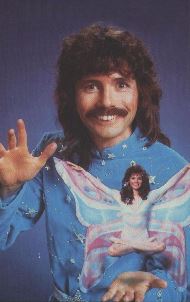
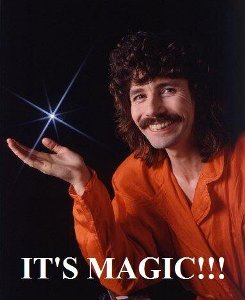

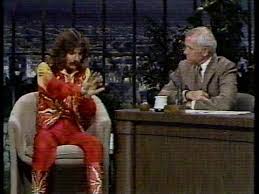

 answered:
answered:
 In memory.
In memory.


Reader Suggestion
Michelle in AZ

Team Coco
CONAN

from Bruce
Anecdotes
• Sometimes, it was hard to get an interview with Canadian novelist Ernest Buckler, author of The Mountain and the Valley. The shy writer once hid in the cornfields of his farm rather than be interviewed. He did find living in a rural area conducive to being a writer, although the country did have its own kind of distractions. He needed silence to write, and he once said that sometimes when he was ready to write "this is precisely the time when somebody will come in, some gal, you know, who'll talk for hours on end as to whether as to whether her husband prefers turnips in the stew or cauliflower." Although Mr. Buckler was shy, he was a good interview. He once said, "Writers, by and large, are the dreariest people you can possibly know, because they are just stuffed with words, like dry-bread dressing on a Christmas Eve goose's ass." As a famous author, he sometimes received funny letters. Someone from Cape Breton wrote him, "I enjoyed your book very much. It was such clear print." A woman from Seattle, Washington, sent him her measurements and wrote him that his name - Ernest Redmond Buckler - thrilled her and that she could see him on a white charger rescuing damsels in distress. Mr. Buckler said, "My God, myself on a white charger! I'm scared sh*tless of horses. One kicked me in the head at thirteen."
• Isaac Asimov wrote hundreds of books. Asked what is his favorite book, he used to reply, "The last one I've written." Of course, he was known for writing science fiction, but he also wrote many books about science for the general public. He once said, "I can read a dozen dull books and make one interesting book out of them." Other people wondered how he could write so much. (He did it by writing for hours every day.) Mr. Asimov did not get a word processor until June of 1981, preferring to write on typewriters. While interviewing Mr. Asimov in 1982, Frank Kendig joked, "I think most of us thought that you had one [a word processor] all along-that or a team of writers chained in the basement." Many people have rituals such as sharpening pencils that they perform before they begin to write. Mr. Asimov once said, "The only thing I do before I start writing is to make sure that I'm close enough to the typewriter to reach the keys." An interviewer once asked Mr. Asimov what he would do if he were told that he had only six months to live. He replied, "Type faster!"
• Margaret Wise Brown, the author of the children's story "Goodnight Moon," was an eccentric. When she received her very first royalty check, she bought every flower for sale on a flower cart. She owned land and a house in Maine that she referred to as "The Only House." Among other features, she had an outdoor room including a mirror nailed to a tree, a table, and a nightstand. She once decorated her room in a hotel in Paris with orange trees and live birds. Many of her friends were also eccentrics. They formed a group they called the Bird Brain Society. One of the rules was that a member could declare any day Christmas and invite the other members of the group to come over and celebrate. She died early, at age 42. Following an operation for appendicitis in France, she seemed to be recovering well. To show her nurse how well she was doing, she kicked her leg as if she were doing the can-can and died instantly of an embolism.
• The late Ray Bradburywas generous when it came to advising and helping other writers. When New York Timesbestselling author Jonathan Maberry was a young teenager, he met and got to know Mr. Bradbury. Mr. Maberry says about Mr. Bradbury, "He gave me a lot of very good advice on craft and the business of publishing, but one of the things that stuck out in my mind was this - he said, 'Writers should always help other writers - because you can bet every penny in your pocket that no one else will do it.' Mr. Maberry says that his manifesto now is this: "Writers should always help other writers." Mr. Maberry says that he "believes that if writers help other writers, then more good works will get published, more people will want to read these works, and all of publishing will thrive. Indie, mainstream, and solo press."
• Stephen King has been typecast as a horror writer although he does many kinds of writing, such as the stories in Different Seasons, including "Rita Hayworth and the Shawshank Redemption." In fact, many readers refuse to believe that Mr. King writes anything other than horror. Mr. King illustrates this with an anecdote: "I was down here [one of the Sarasota Keys in Florida] in the supermarket, and this old woman comes around the corner-obviously one of the kind of women who says whatever is on her brain. She said, 'I know who you are; you are the horror writer. I don't read anything that you do, but I respect your right to do it. I just like things more genuine, like that Shawshank Redemption.'And I said, 'I wrote that.' And she said, 'No, you didn't.' And she walked off and went on her way."
• Isaac Asimov wrote his autobiography for Doubleday, but after writing 50 pages, he discovered that he had gotten only as far as his first three years of life, meaning that his autobiography would be huge. His friend and fellow science-fiction writer Ben Bova visited him and saw the many pages of typed manuscript that Mr. Asimov was pouring out. Mr. Asimov explained, "In this autobiography, I'm including every stupid thing I can remember having said or done." Mr. Bova joked, "No wonder it's so long."
• In 1939, an alumnus of MIT, class of 1889, wrote a 50,110-word novelty novel titled Gadsby. Why "novelty"? It did not contain the letter E. It did include sentences such as this: "Youth cannot stay for long in a condition of inactivity."
• "The best way to become acquainted with a subject is to write a book about it." - Benjamin Disraeli
***
© Copyright Bruce D. Bruce; All Rights Reserved
***
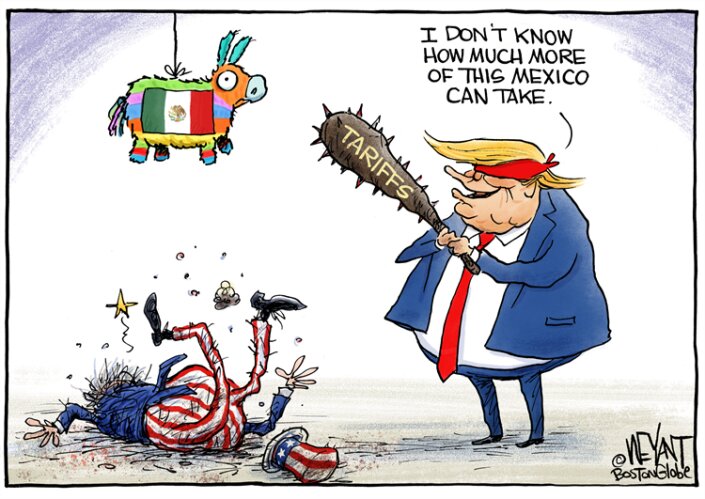
Bonus Links
Jeannie the Teed-Off Temp
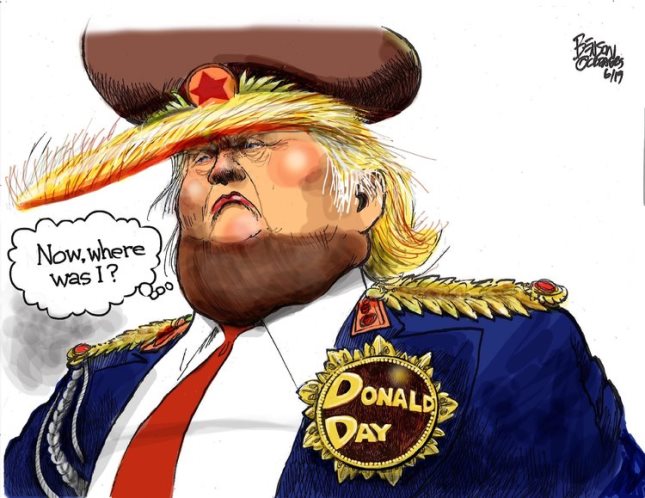
Reader Comment
Current Events


Linda >^..^<
We are all only temporarily able bodied.
Thanks, Linda!



Selected Readings
from that Mad Cat, JD
JD is on vacation.

Visit JD's site - Kitty Litter Music
In The Chaos Household
Last Night
During the Clinton years, pearls were clutched while nattering nabobs queried 'what about the children'?
No one seems to be asking that question currently and I wonder why.
Explaining that a grown-up messed up with grown-up stuff isn't that difficult, but how do you explain a president who continually lies?
Or makes things up? Engages in name-calling? Enjoys being a bully? Thinks his hair looks good? And the vulgar language.
Behaviors that'll get a kid in genuine trouble, at home, at school, and in life in general.
So, really, wtf do we tell the children?

'So Done'
Alec Baldwin
Q: Who would you like to see play Trump on "Saturday Night Live" after you?
Baldwin: I don't know. Darrell Hammond did it and is a far better impressionist than I'll ever be. When Anthony Atamanuik (started impersonating Trump on Comedy Central's "The President Show"), all these people were attacking me, saying, "Oh, your impression sucks and you suck. Please go away." It also was something I thought to myself: "I really don't have a lot invested in my Trump impersonation, so please find someone and convince Lorne (Michaels) to replace me." I'm completely down with that. Winning the Emmy for that show aside, it was not some career goal of mine.
So if (Atamanuik) wants the job, it's his. He can have it. I've done that. I mean, I had a lot of fun with (the cast), and when Chris Kelly and Sarah Schneider wrote (Trump sketches in 2016 and 2017), that was new, it was fresh and the ratings were good. But I feel like I'm done with that now. I'm so done with that.
Q: So you don't think you'll return next season?
Baldwin: I can't imagine I would do it again. I just can't. They should find somebody who wants to do it. They're all my dear friends and I love going there, but the other thing is that I'm going to go to work this fall in a way I haven't done in a while. My wife and I had a son a year ago, and since he was born, I've worked minimally because I wanted to be there for my wife and kids. But the party's over this fall and I'll be traveling. "SNL" just crushes my weekends, and now weekends are going to become much more precious to me because that's time with my kids.
Alec Baldwin

Loses Appeal
Madonna
Madonna lost a court battle to keep a trove of intimate belongings including a pair of satin panties, a brush containing her hair and a breakup letter from a former boyfriend, the late rapper Tupac Shakur, from heading to the auction block.
A New York state appeals court in Manhattan on Tuesday cleared the way for an auction, saying Madonna could not pursue claims against Darlene Lutz, her former friend and art consultant, or the GottaHaveRockandRoll.com online auction website, to which Lutz consigned the items for sale.
The Appellate Division said Madonna's claims were barred by a "very broad" release in her 2004 settlement agreement with Lutz, who was "free to do with the property as she wished" as its rightful owner.
Madonna, 60, had said she did not know until learning about the auction that Lutz, who worked for the singer from 1981 to 2003, possessed the more than 20 disputed items.
Tuesday's 5-0 decision upheld an April 2018 ruling by Justice Gerald Lebovits of the state supreme court in Manhattan.
Madonna
Ceremony Waits
D-Day
With the gravestones of fallen WWII heroes visible over his shoulder and gathered veterans waiting for today's D-Day commemoration ceremony in Normandy to begin, President Don-Old Trump (R-Bone Spurs) sat for a live Fox News interview with Laura Ingraham, 15 minutes after the ceremony was supposed to begin.
"French television cameras spotted President Trump sitting down with Fox's Laura Ingraham - fourteen minutes *after* the ceremony in Normandy was set to begin," tweeted MSNBC's Hallie Jackson. "Thousands of people waited as an announcement overhead came on, declaring the program would be delayed until 11:15a."
Before delivering his speech at the ceremony, Trump lashed out on Fox News at fellow Americans Robert Mueller and Nancy Pelosi, saying the former "made a fool out of himself" and that House Speaker Pelosi "is a disaster." Trump told Ingraham, "I call her Nervous Nancy."
The tone of Trump's comments was in stark contrast with the solemnity of the occasion, and even with the tone of Trump's public speech delivered shortly thereafter. CNN's Jim Acosta said on-air, "One of the reasons why President Trump was delayed, one of the reasons he was late getting here, he was sitting down with a Fox News personality before his speech began."
D-Day
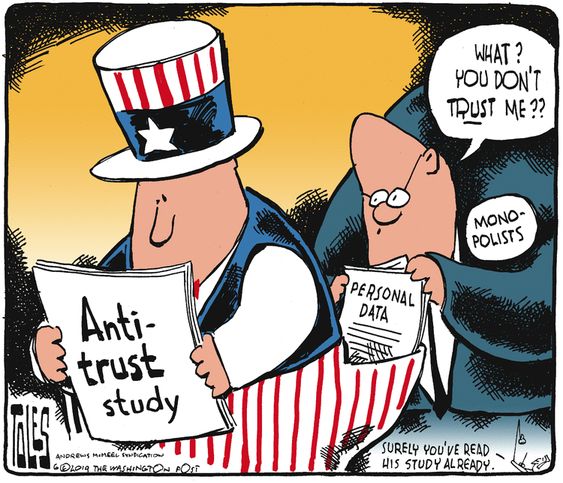
Gerrymandering Strategy
North Carolina
The files of a deceased Republican operative who masterminded GOP gerrymandering efforts show that Republicans in North Carolina misled a federal court in 2017 to extend the life of their state legislative district map, a watchdog group claims in state court documents released Thursday.
The group, Common Cause, claims that North Carolina officials had told a federal court they would not be able to redraw the state's legislative district map, which had been ruled unconstitutional, in time for a special election and needed more time to comply.
But the files of the operative, Thomas Hofeller, reveal that nearly all of the work of drawing up new districts, including tallying the racial composition of each, had been nearly completed, with proposed new boundaries for more than 97 percent of the state's Senate districts and 90 percent of House districts, the group's lawyers alleged in the state court documents.
After the federal court issued an order halting the special election, the existing map was kept in place, which allowed Republicans to maintain a veto-proof majority in the state legislature for another year.
Hofeller has also been linked to the Trump administration's controversial push to add a citizenship question to the 2020 census, which he had argued would give an advantage to Republicans by suppressing responses in immigrant communities, according to court records.
North Carolina
Remade
Federal Judiciary
President Trump (R-Crooked) has utterly remade the federal judiciary, filling vacancies that had been held open by congressional Republicans during President Barack Obama's eight years in office. Just two years into his own term, Trump has successfully installed two Supreme Court justices - something it took Obama eight years to do - and appointed 40 circuit court judges, who handle the all-important task of fielding appeals.
But in recent months, the battle over judges has moved to district court, the lowest of three major rungs of the federal judiciary and where most major cases - whether concerning guns or health care - begin (a few of those eventually end up at the Supreme Court, after the appeals process). So far, Trump has successfully appointed 64 district court judges, about the same number as Obama at this point in his first term.
Trump, however, is likely to make dozens more appointments in the coming months, as Senate Majority Leader Mitch McConnell, R-Ky., has made confirming conservative justices a top priority. Losing either the presidency or the Senate majority next year would effectively put an end to that project.
The focus on district courts is a matter of necessity. "There have to be vacancies in order to fill them," says Mike Davis, a former top Senate Judiciary Committee aide to Sen. Chuck Grassley, R-Iowa, who was chairman of that committee in the previous Congress. "President Trump, Chuck Grassley and Mitch McConnell did a phenomenal job of filling circuit court vacancies," said Davis, who now runs the Article III Project, an organization that advocates for a conservative judiciary. The Trump administration now has only five circuit court vacancies to fill.
All four of the nominees are white and only one is a woman, in general demographic keeping with the profile of a Trump judge. If confirmed, they will all have lifetime appointments to the federal bench. And since all of the nominees are relatively young, they will likely continue to exert influence on the courts for many years after Trump has left the Oval Office.
Federal Judiciary

Scientists Decode Genome
Medieval Europe
Yersinia pestis is the bacterium responsible for the first plague pandemic (and all plague pandemics since) - the Justinian Plague of 541 to 750 CE. This public health crisis wiped out close to 100 million people in Asia, Africa, and Europe in the first five years alone.
Now, an international team of researchers writing in Proceedings of the National Academy of Sciences and led by the Max Planck Institute for the Science of Human History have analyzed the remains of 21 victims and reconstructed eight plague genomes to find out the bacteria evolved and the impact it had on Early Middle Age Europe.
The Justinian Plague - named after Justinian I, ruler of the Eastern Roman (or, Byzantine) Empire - kicked off in 541 CE. Following an outbreak in central Asia, the disease spread to Egypt before reaching Istanbul (then Constantinople), the Empire's capital, and the rest of mainland Europe. A series of recurrent outbreaks over the next 200 or so years decimated Europe and the Mediterranean basin, obliterating up to 25 percent of the population and contributing to the breakdown of the East Roman Empire.
While recent research has named the culprit as Y. pestis, its way of spreading and the relationship between the various strains that popped up during the pandemic have remained something of a mystery. By reconstructing the genomes of eight strains sourced from 21 burials across Austria, Britain, France, Germany, and Spain, scientists were able to compare their structure to those of previously published ancient and modern strains of the bacteria.
Interestingly, the team was able to confirm the plague's presence in Anglo-Saxon England with genetic evidence for the very first time. At least four of the 149 individuals buried at Edix Hill cemetery near Barrington, Cambridgeshire, between 500 and 650 CE have tested positive for Y. pestis and almost certainly died from it.
Medieval Europe

Top 20
Global Concert Tours
The Top 20 Global Concert Tours ranks artists by average box office gross per city and includes the average ticket price for shows Worldwide. The list is based on data provided to the trade publication Pollstar by concert promoters and venue managers. Week of June 5, 2019:
1. Ed Sheeran; $4,515,983; $89.88.
2. Metallica; $3,229,815; $102.54.
3. Eric Church; $2,834,784; $92.41.
4. Pink; $2,213,911; $139.86.
5. Justin Timberlake; $2,036,267; $133.68.
6. Post Malone; $1,857,722; $87.36.
7. Cher; $1,634,099; $122.14.
8. Ariana Grande; $1,588,068; $111.82.
9. Michael Bublé; $1,501,474; $120.63.
10. KISS; $1,373,284; $110.47.
11. John Mayer; $1,349,589; $119.90.
12. Bad Bunny; $1,303,591; $95.32.
13. Backstreet Boys; $1,301,722; $99.67.
14. Bob Seger & The Silver Bullet Band; $1,249,979; $102.01.
15. André Rieu; $1,247,554; $79.04.
16. Rod Stewart; $1,180,264; $98.72.
17. Blake Shelton; $1,072,462; $90.53.
18. Mumford & Sons; $1,064,406; $71.00.
19. Travis Scott; $1,028,797; $75.95.
20. Shawn Mendes; $982,467; $69.89.
Global Concert Tours
In Memory
Mac 'Dr. John' Rebennack
Dr. John, the New Orleans singer and piano player who blended black and white musical styles with a hoodoo-infused stage persona and gravelly bayou drawl, died Thursday, his family said. He was 77.
In a statement released through his publicist, the family said Dr. John, who was born Mac Rebennack, died "toward the break of day" of a heart attack. They did not say where he died or give other details. He had not been seen in public much since late 2017, when he canceled several gigs. He had been resting at his New Orleans area home, publicist Karen Beninato said last year in an interview.
His spooky 1968 debut "Gris-Gris" combined rhythm 'n blues with psychedelic rock and startled listeners with its sinister implications of other-worldly magic, employing a piano style both rollicking and haunting. He later had a Top 10 hit with "Right Place, Wrong Time," collaborated with numerous top-tier rockers, won multiple Grammy awards and was inducted into the Rock & Roll Hall of Fame.
A white man who found a home among black New Orleans musicians, he first entered the music scene when he accompanied his father, who ran a record shop and also fixed the P.A. systems at New Orleans bars.
As a teenager in the 1950s, he played guitar and keyboards in a string of bands and made the legendary studio of Cosimo Matassa his second home, Rebennack said in his 1994 memoir, "Under a Hoodoo Moon." He got into music full-time after dropping out of high school, became acquainted with drugs and petty crime and lived a fast-paced life. His gigs ranged from strip clubs to auditoriums, roadhouses and chicken shacks. The ring finger of Rebennack's left hand was blown off in a shooting incident in 1961 in Jacksonville, Florida.
He blamed Jim Garrison, the JFK conspiracy theorist and a tough-on-crime New Orleans district attorney, for driving him out of his beloved city in the early 1960s. Garrison went after prostitutes, bars and all-night music venues.
The underworld sweep put Rebennack in prison. At that time, he was a respected session musician who had played on classic recordings by R&B mainstays like Professor Longhair and Irma Thomas, but he was also a heroin addict. After his release from federal prison in Fort Worth, Texas, at age 24, Rebennack joined friend and mentor Harold Battiste who had left New Orleans to make music in Los Angeles.
Rebennack, who'd long had a fascination with occult mysticism and voodoo, told Battiste about creating a musical personality out of Dr. John, a male version of Marie Laveau, the voodoo queen.
In the years that followed, he played with The Grateful Dead, appeared with The Band in director Martin Scorsese's "The Last Waltz" documentary, jammed on The Rolling Stones' "Exile on Main Street" album and collaborated with countless others - among them Earl King, Van Morrison and James Booker.
Mac 'Dr. John' Rebennack

| CURRENT MOON lunar phases |


